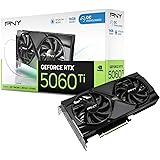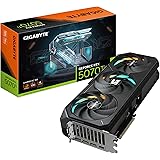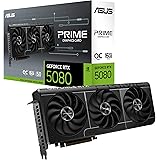The Nvidia GeForce GTX 1050 Ti, released in 2016, emerged as a significant player in the entry-level graphics card market. Designed to provide a balance between performance and affordability, it quickly gained popularity among gamers and cryptocurrency miners alike. Its Pascal architecture, combined with a modest power consumption, made it an attractive option for budget-conscious consumers.
Architecture and Specifications
The GTX 1050 Ti is built on Nvidia’s Pascal architecture, which brought improvements in power efficiency and performance compared to its predecessors. The core specifications of the GTX 1050 Ti include:
These specifications allowed the GTX 1050 Ti to deliver a solid gaming experience at 1080p resolution. Its 4GB of GDDR5 memory was sufficient for most games of its time, ensuring smooth gameplay without excessive stuttering or texture loading issues. The 128-bit memory interface and 112 GB/sec memory bandwidth were adequate for handling the data throughput required by modern games.

In terms of gaming performance, the GTX 1050 Ti was capable of running most titles at medium to high settings at 1080p resolution. Games like “Overwatch,” “Fortnite,” and “Rocket League” ran smoothly, providing a pleasant gaming experience. More demanding titles like “The Witcher 3” and “Assassin’s Creed” could still be played, albeit with reduced settings to maintain a playable frame rate.
The GTX 1050 Ti’s performance made it a popular choice for gamers who wanted a decent gaming experience without breaking the bank. Its ability to handle a wide range of games at reasonable settings ensured its longevity and relevance in the market.
Cryptocurrency Mining
Beyond gaming, the GTX 1050 Ti also found a niche in cryptocurrency mining. Its power efficiency and moderate hash rate made it a viable option for mining various cryptocurrencies. Here’s a look at its mining performance:
The GTX 1050 Ti’s mining performance varied depending on the cryptocurrency being mined and the specific mining algorithm used. Ethereum, Zcash, and Monero were among the popular choices for mining with this card. Its low power consumption, around 75 watts, made it an attractive option for miners looking to minimize electricity costs.
Overclocking Capabilities
The GTX 1050 Ti also offered overclocking potential, allowing users to squeeze even more performance out of the card. By adjusting the core clock and memory clock speeds, miners and gamers could achieve higher hash rates or frame rates. Typical overclocking settings include:
Overclocking could increase the Ethereum mining hash rate from 12 MH/s to 15 MH/s, and similarly improve the hash rates for other cryptocurrencies. However, overclocking also increased the card’s power consumption and heat output, requiring adequate cooling to prevent damage.
Power Consumption and Efficiency
One of the standout features of the GTX 1050 Ti was its low power consumption. With a TDP (Thermal Design Power) of just 75 watts, it was one of the most power-efficient graphics cards in its class. This made it an ideal choice for users with limited power supplies or those looking to reduce their electricity bills.
The GTX 1050 Ti’s power efficiency also made it a popular choice for mining cryptocurrencies. Miners could run multiple cards without overloading their power supplies, maximizing their mining output while keeping energy costs down.
Impact on the Graphics Card Market
The GTX 1050 Ti had a significant impact on the graphics card market, particularly in the entry-level segment. Its combination of performance, affordability, and power efficiency made it a compelling option for budget-conscious consumers. It forced other manufacturers to compete in this segment, leading to more innovation and better options for consumers.
The GTX 1050 Ti also played a role in popularizing PC gaming among a wider audience. Its ability to run popular games at reasonable settings made it accessible to gamers who couldn’t afford more expensive graphics cards. This helped to grow the PC gaming community and drive demand for gaming hardware.
Comparison with Competitors
When the GTX 1050 Ti was released, it faced competition from AMD’s Radeon RX 460 and RX 560. While the RX 460 was initially priced similarly, the GTX 1050 Ti generally offered better performance in most games. The RX 560, which was released later, provided a more competitive alternative, but the GTX 1050 Ti still held its ground due to its lower power consumption and widespread availability.
Compared to its predecessor, the GTX 950, the GTX 1050 Ti offered a significant performance boost while consuming less power. This made it a worthwhile upgrade for gamers looking to improve their gaming experience without upgrading their entire system.
Current Relevance
Despite being released in 2016, the GTX 1050 Ti remains relevant in certain contexts. Its low price and decent performance make it a viable option for budget gaming PCs, especially in regions where newer graphics cards are either too expensive or unavailable.
The GTX 1050 Ti is also still used for cryptocurrency mining, although its profitability has decreased significantly due to the rise of more powerful mining hardware. However, its low power consumption and availability make it a viable option for hobbyist miners or those with limited resources.
Potential Future Developments
While the GTX 1050 Ti is an older graphics card, its legacy continues to influence the design and development of newer entry-level cards. Manufacturers are constantly striving to improve power efficiency and performance in this segment, and the GTX 1050 Ti serves as a benchmark for what can be achieved with limited resources.
In the future, we can expect to see even more powerful and efficient entry-level graphics cards that build upon the foundation laid by the GTX 1050 Ti. These cards will likely incorporate newer architectures, faster memory, and more advanced features to deliver a better gaming and mining experience.
Influential Individuals
While no single individual is solely responsible for the GTX 1050 Ti, several engineers, designers, and product managers at Nvidia contributed to its development and success. These individuals worked tirelessly to optimize the Pascal architecture, design the card’s layout, and ensure its performance and reliability.
Various Perspectives
From a gamer’s perspective, the GTX 1050 Ti was a game-changer, providing an affordable way to experience modern games at reasonable settings. From a miner’s perspective, it was a cost-effective tool for generating cryptocurrency. From a manufacturer’s perspective, it was a successful product that helped to drive sales and market share.
These different perspectives highlight the versatility and impact of the GTX 1050 Ti. It was not just a graphics card, but a tool that empowered gamers, miners, and manufacturers alike.
The Nvidia GeForce GTX 1050 Ti was a significant graphics card that made a lasting impact on the market. Its combination of performance, affordability, and power efficiency made it a popular choice for gamers and miners alike. While it may be an older card, its legacy continues to influence the design and development of newer entry-level cards. Its impact on PC gaming, cryptocurrency mining, and the graphics card market as a whole cannot be overstated.
Nvidia Geforce GTX 1050 TI Specifications :
- NVIDIA CUDA® Cores : 768
- Base Clock : 1290 MHz
- Boost Clock : 1392 MHz
- Memory Interface Width : 128-bit
- Memory Bandwidth : 112 GB/sec
- Memory Speed : 7 Gbps
- Standard Memory Config : 4 GB GDDR5
Nvidia Geforce GTX 1050 TI Hashrate :
- Ethereum Mining Hashrate : 12 MH/s
OverClocking Hashrate : 15 MH/s
- Zcash Mining Hashrate : 145 sol/s
OverClocking Hashrate : 175 sol/s
- Monero Mining Hashrate : 300 H/S
OverClocking Hashrate : 325 H/S

- KECCAK Mining Hashrate : 21.57 MH/s
- NeoScrypt [ (ORB) & (PXC) & (FTC) & (INN) & (GBX) & (TZC) & (VIVO) & (CRC) ] Mining Hashrate : 0.38 MH/s
- Cryptonight [ (XMR) & (XDN) ] Mining Hashrate : 0.3 kH/s
- CryptoNightV7 Mining Hashrate : 0.243 KH/s
- Lyra2REv2 [ (XVG) & (VTC) & (MONA) ] Mining Hashrate : 15.53 MH/s
- Equihash [ (ZEC – ZEN – ZCL) & (BTG) & (KMD) & (HUSH) ] Mining Hashrate : 178.23 Sol/s
- Pascal [ (PASC) & (PASL) ] Mining Hashrate : 0.37 GH/s
- SIACOIN (SC) Mining Hashrate : 0.675 GH/s
GTX 1050 TI OverClocking Settings :
- Power : 80%
- Core : +150
- Memory :
- Ethereum : +100
- Zcash : +900
- Monero : +900
Power Consumption : 75 Watt/Per Hour .




